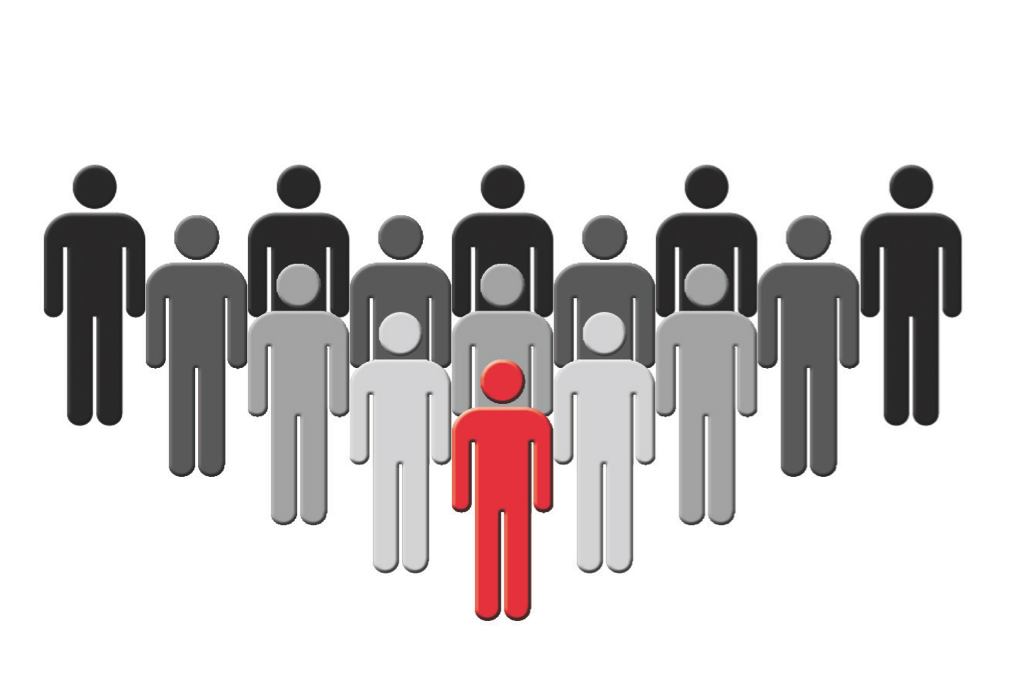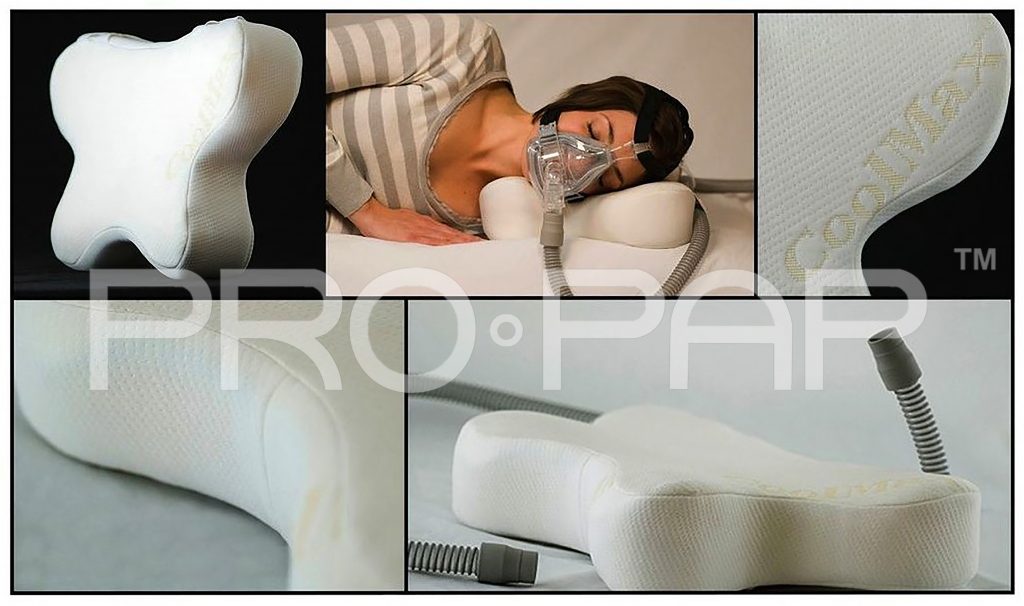Sleep Apnea Research
A Widespread Problem
Over 20 Million People Suffer From Sleep Apnea
Obstructive sleep apnea (OSA) puts patients at an increased risk for stroke, heart problems, diabetes, and a variety of other diseases [NIH 2005]. Within the United States alone, over 20 million people suffer from sleep apnea, making it as widespread as asthma [NIH 2005]. OSA prevalence is approximately 2 times greater among men versus women [Young 1993]. While OSA prevalence differences between genders are more evident, racial/ ethnic disparities are less apparent. However, the strongest indications are that OSA prevalence among African Americans may be greater than among other groups [Dudley 2016].

In positional sleep studies, the effectiveness of the side-sleeping, or lateral, position to reduce Obstructive Sleep Apnea (OSA) is well documented. Approximately one-half of all OSA patients are positional, with a majority of breathing abnormalities appearing in the back-sleeping, or supine, position [Oksenberg 2006]. However, OSA patients who sleep in the lateral position experience marked reduction in the number of apnea-hypopneas [Oksenberg 2005], reduction in the severity of Cheyne-Stokes respiration [Szollosi 2006], reduction (across all sleep stages) in the apnea index [Szollosi 2006], and a reduction in the upper airway collapsibility, independent of sleep stage. [Penzel 2001]
Surgeries and/ or implants offer invasive, and often cost-prohibitive treatments. However, the preferred treatment for sleep apnea is Positive Airway Pressure (PAP). This therapy requires a pressurized mask over the patient’s nose and/or mouth during sleep.
Good Sleep is Essential
Poor Sleep & Comorbidities
Disruption of normal sleep causes increased problems with cognition and activates inflammatory processes thought to play a role in the development and progression of cardiovascular disease. Moderate to severe OSA affects more than 1 in 5 adults in the United States. Individuals with OSA are known to be at a large increased risk of all-cause mortality, increased hypertension, heart failure, cardiac arrhythmias, insulin resistance glucose intolerance and a high frequency of type-2 diabetes.
The effectiveness of the side-sleeping, or lateral, position to reduce Obstructive Sleep Apnea (OSA) is well documented. Approximately one-half of all OSA patients are positional, with a majority of breathing abnormalities appearing in the back-sleeping, or supine, position.
OSA patients who sleep in the lateral position experience a marked reduction in the number of apnea-hypopneas, a reduction in the severity of Cheyne-Stokes respiration, a reduction in the apnea index by 50%, and a reduction in the upper airway collapsibility, independently of sleep stage.

Research studies affirm the effectiveness of Positive Airway Pressure (PAP) as the preferred treatment for patients with moderate to severe OSA [Gay 2006]. For clarification purposes, the acronym PAP includes devices with continuous (constant) pressure (C-PAP), bi-level pressure (Bi-PAP), and variable pressures (Auto-PAP and V-PAP). Studies of the effect of PAP therapy show that OSA patients who consistently use their machines feel better and, as a result of the reduction of apnea and hypopnea episodes during sleep, encounter fewer complications of the disease. However, acceptance of CPAP therapy among sleep-related breathing disorder patients is low, despite substantial potential for CPAP therapy efficacy [Grote 2000]. Many patients fail to adhere to CPAP therapy because the weight and annoyance of the mask and tubing seem intolerable. Consequently, patients become unable or unwilling to keep the apparatus in place, whether in a supine or lateral position, leaving millions of patients effectively untreated.
Similarly, Engleman states that 5-50% of PAP therapy patients reject or fail to continue use of PAP therapy, and another 12-25% of remaining patients are anticpated to quit PAP therapy within 3 years [Engleman 2001]. Factors such as mask discomfort and sleep position are the most common reasons given by patients that fail to maintain the compliance standard [Luyster 2016; Wolkove 2008], defined by at least 4 hours of use per night on 70% of the days monitored. [Kribbs 1993]
Heinzer suggests that a combined therapy with a positional device could be considered in patients insufficiently treated with PAP [Heinzer 2012]. So while numerous non-PAP positional studies have been published, and numerous studies have established the clinical effectiveness of PAP therapy, no published studies have examined the clinical effectiveness of PAP therapy combined with the lateral sleeping position as a solution for improving patient adherence.

The Solution For OSA Sufferers
PRO•PAP™ Technology
PRO-PAP has developed a solution, which is intended to be an adjunct to PAP therapy. The PRO•PAP 2.0 Pillow is a side-sleeper pillow designed to accommodate the patient’s PAP mask. The PRO•PAP 2.0 Pillow is expected to increase PAP therapy usage due to its features:
- The patented butterfly shape, which reduces contact between the pillow and the patient’s mask.
- The patented x-bands, which manages the CPAP tubing, decreasing the drag of the tubing on the patient’s mask.
- The pillow’s orthopedic curve, which supports the neck.
- The Cool-Max pillow cover, which helps cool and wick away the perspiration common with sleep disorders.
Get The Rest You Need
The PRO•PAP Pillow 2.0 addresses the need for a multi-positional PAP pillow promoting postural support combined with the clinical efficacy of PAP therapy.
References
Dudley, K.A., Patel, S.R., Disparities and Genetic Risk Factors in Obstructive Sleep Apnea, Sleep Medicine, 2016 Feb, 18:96-102. Engleman H.M., Wild M.R., Improving CPAP use by patients with the sleep apnea/ hypopnea syndrome, Sleep Medicine, Rev. 2003 Feb 7,(1):81–9.
Gay, P., MD, Weaver, T., RN, CS, FAAN, Loube D., MD, Iber, C., MD, Evaluation of positive airway pressure treatment for sleep related breathing disorders in adults, Sleep, 2006, 29(3):381-401.
Grote, L., Hedner, J., Grunstein R., Kraiczi H., Therapy with nCPAP: Incomplete Elimination of Sleep Related Breathing Disorder, European Respiratory Journal, 2000, 16:921-7.
Heinzer, Raphael C., Positional therapy for obstructive sleep apnea: An objective measurement of patients’ usage and efficacy at home, Sleep Medicine, 2012 Apr, 13(4):425-8.
Kribbs, N.B., Pack. A.I., Kline, L.R., Smith, P.L., Schwartz, A.R., Schubert, N.M., Redline, S., Henry, J.N., Getsy, J.E., Dinges, D.F., Objective measurement of patterns of nasal CPAP use by patients with obstructive sleep apnea, The American Review of Respiratory Disease, 1993 Apr,147(4):887–895.
Luyster, F.S., Dunbar-Jacob J., Aloia, M.S., Martire, L.M., Buysse, D.J., Strollo, P.J., Patient and Partner Experiences With Obstructive Sleep Apnea and CPAP Treatment: A Qualitative Analysis, Behavioral Sleep Medicine, 2016, 14(1):67-84.
NIH Publication, No. 06-5271, Nov 2005.
Oksenberg, A., Silverberg D.,Offenbach, D., Arons, E., Positional therapy for obstructive sleep apnea patients: A 6-month follow-up study, Laryngoscope, 2006 Nov, 116(11):1995-2000.
Oksenberg A., Positional and non-positional obstructive sleep apnea patients, Sleep Medicine, 2005, 6:377–378.
Penzel, T., Effect of sleep position and sleep stage on the collapsibility of the upper airways in patients with sleep apnea, Sleep, 2001 Feb 1, 24(1):90-5.
Szollosi, I., Roebuck, T., Thompson, B., Naughton, M.T., Lateral sleeping position reduces severity of central sleep apnea / Cheyne-Stokes respiration, Sleep, 2006 Aug, 29(8):1045-51.
Wolkove, N., et al, Long-term compliance with continuous positive airway pressure in patients with obstructive sleep apnea, Canadian Respiratory Journal, 2008, 15 (7): 365-369.
Young T., Finn L., Peppard, P.E., Szklo-Coxe, M., Austin, D., Nieto, F.J., Stubbs, R., Hla, K.M., Sleep disordered breathing and mortality: eighteen-year follow-up of the Wisconsin sleep cohort, Sleep, 2008, 31:1071-8.
Zuberi, N., M.D., Rekab, K., Ph.D., Nguyen, H., BS. RPSGT, Sleep apnea avoidance pillow effects on obstructive sleep apnea syndrome and snoring, Sleep Breath, 2004 Dec, 8(4):201-7.

